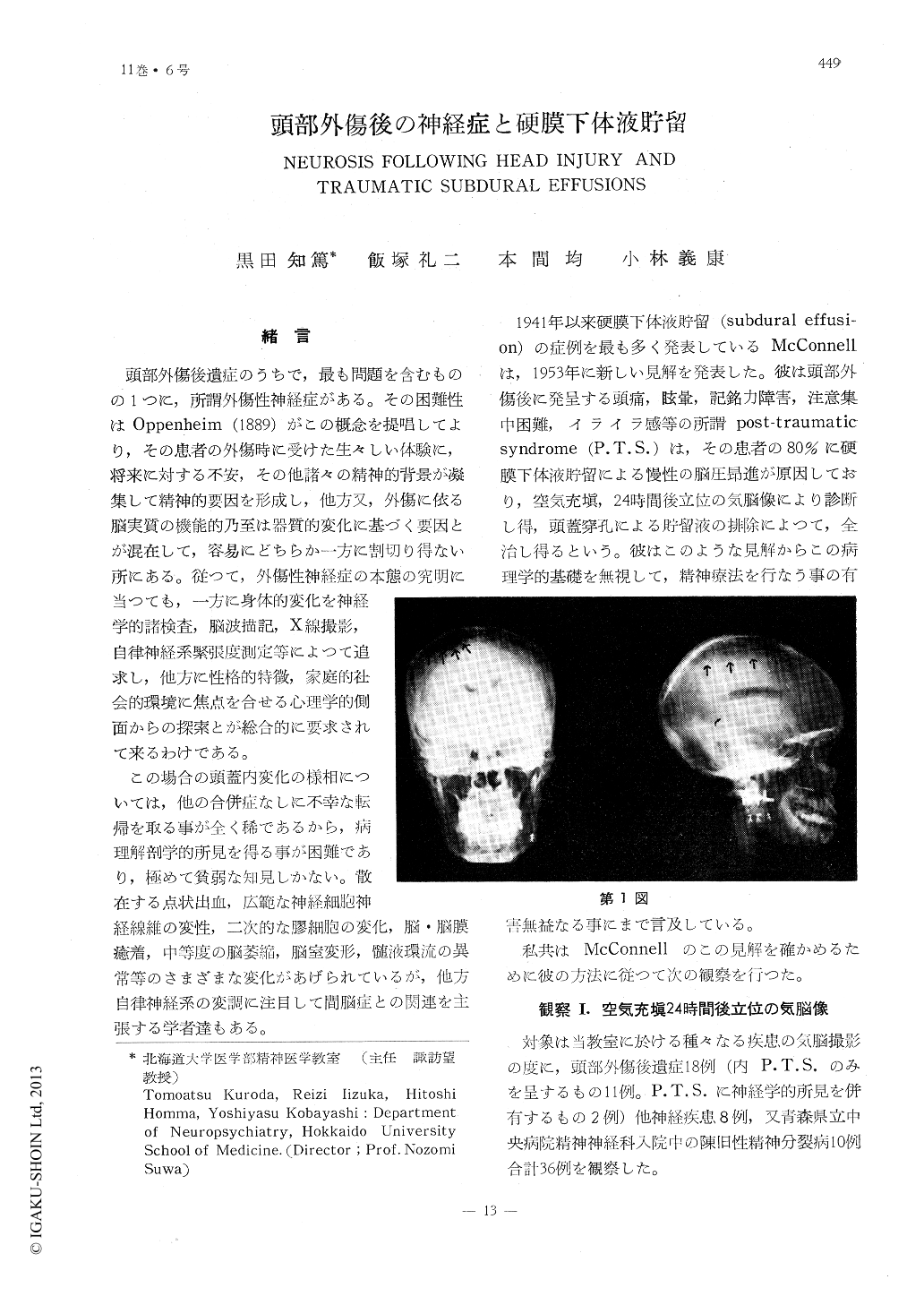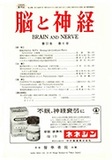Japanese
English
- 有料閲覧
- Abstract 文献概要
- 1ページ目 Look Inside
緒言
頭部外傷後遺症のうちで,最も問題を含むものの1つに,所謂外傷性神経症がある。その困難性はOppenheim (1889)がこの概念を提唱してより,その患者の外傷時に受けた生々しい体験に,将来に対する不安,その他諸々の精神的背景が凝集して精神的要因を形成し,他方又,外傷に依る脳実質の機能的乃至は器質的変化に基づく要因とが混在して,容易にどちらか一方に割切り得ない所にある。従つて,外傷性神経症の本態の究明に当つても,一方に身体的変化を神経学的諸検査,脳波描記,X線撮影,自律神経系緊張度測定等によつて追求し,他方に性格的特徴,家庭的社会的環境に焦点を合せる心理学的側面からの探索とが総合的に要求されて来るわけである。
この場合の頭蓋内変化の様相については,他の合併症なしに不幸な転帰を取る事が全く稀であるから,病理解剖学的所見を得る事が困難であり,極めて貧弱な知見しかない。散在する点状出血,広範な神経細胞神経線維の変性,二次的な膠細胞の変化,脳・脳膜癒着,中等度の脳萎縮,脳室変形,髄液環流の異常等のさまざまな変化があげられているが,他方自律神経系の変調に注目して間脳症との関連を主張する学者達もある。
A. A. McConnell reported a new point of view concerning the pathological basis of the post-traumatic syndrome in 1953 & 1956. He says, "The pathological basis of the post-traumatic syndrome is a state of chronic elevation of intracranial pressure, due, in over 80% of patients, to a leakage of cerebro-spinal fluid into the subdural space. This fluid accumulation can be demonstrated by the second day pneumoencephalogram, and removed through burr-holes in the skull."
In this report, following observations were attempted to criticize McConnell's opinion.
1) By the second day pneumoencephalogr-am, subdural air with a "fluid level,,, which is, according to the opinion of Mc Connell, a pathognomonic sign of leaking of the cere-brospinal fluid into the subdural space, was observed in 7 out of 13 cases of post-traum-atic syndrome and in 7 out of 23 cases of other neuropsychiatrical diseases.
2) In 2 cases of post-traumatic syndrome with above pneumo-encephalographic signs, subdural effusions were observed and were removed through burr-holes. Symptomes re-laxed in several day after the operation, but soon came back.

Copyright © 1959, Igaku-Shoin Ltd. All rights reserved.


